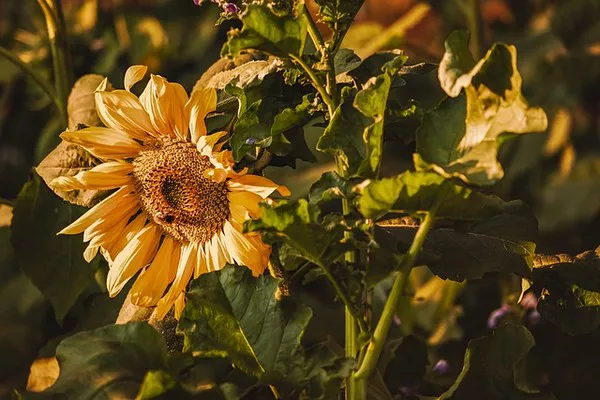Sunflowers, with their vibrant yellow petals and towering stems, are not only a delightful addition to gardens but also play a crucial role in the ecosystem. However, like any other plant, sunflowers are susceptible to various pests that can compromise their health and vitality. In this article, we will explore the common bugs that sunflowers attract and discuss effective management strategies to ensure the well-being of these iconic flowers.
Aphids: The Tiny Menace
Aphids are one of the most common pests that sunflowers attract. These tiny, soft-bodied insects feed on the sap of sunflower plants, causing wilting, yellowing, and distortion of leaves. Aphids are usually found on the undersides of leaves and reproduce rapidly, making them a challenging adversary for sunflower enthusiasts.
To control aphids, regular monitoring of sunflower plants is crucial. Natural predators, such as ladybugs and lacewings, can be introduced to the garden to help keep aphid populations in check. Additionally, spraying a mild solution of soapy water on affected plants can deter aphids without causing harm to the sunflowers.
Sunflower Moth: A Silent Threat
The sunflower moth, or Homoeosoma electellum, is a sneaky pest that can wreak havoc on sunflower crops. The larvae of these moths feed on the developing seeds within the sunflower heads, leading to reduced seed quality and yield. Identifying the presence of sunflower moths early on is crucial for effective management.
To deter sunflower moths, it is essential to employ preventive measures. Planting sunflowers in well-spaced rows can reduce the likelihood of moth infestations. Additionally, introducing natural enemies like parasitic wasps can help control sunflower moth populations. Regularly inspecting sunflower heads for signs of larvae and promptly removing affected parts can also contribute to effective management.
Sunflower Beetles: A Striped Nuisance
Sunflower beetles, particularly the banded sunflower beetle (Chrysolina auripennis), pose a threat to sunflowers during their larval and adult stages. The larvae feed on the leaves, while the adults consume both leaves and flowers, causing significant damage. Identifying the early signs of sunflower beetle infestation is crucial for preventing widespread damage.
Cultural practices can play a vital role in managing sunflower beetles. Crop rotation, companion planting, and intercropping with repellent plants can help disrupt the beetle’s life cycle and reduce infestations. Applying neem oil or insecticidal soap to affected sunflowers can provide effective control while minimizing harm to beneficial insects.
Cutworms: Undermining Sunflower Growth
Cutworms are nocturnal caterpillars that feed on the stems of young sunflower plants, often severing them at ground level. These pests can quickly undermine the growth and development of sunflowers, particularly in the early stages of growth. Recognizing the signs of cutworm damage and implementing preventive measures are crucial for protecting sunflowers.
To manage cutworms, creating physical barriers, such as collars made from cardboard or plastic, around the base of sunflower stems can prevent these pests from causing damage. Biological control methods, such as introducing parasitic nematodes or predatory insects like ground beetles, can also help manage cutworm populations in a natural and sustainable manner.
Grasshoppers: The voracious Feeders
Grasshoppers are known for their voracious feeding habits, and sunflowers are not immune to their appetite. These insects can rapidly strip sunflower plants of their leaves, severely impacting their overall health. Effective management of grasshopper populations is essential for preserving sunflowers in areas where these pests are prevalent.
Cultivating a diverse garden with a variety of plant species can help attract natural predators of grasshoppers, such as birds and predatory insects. Applying diatomaceous earth or introducing biological insecticides can provide additional control without harming the environment. Regular monitoring and early intervention are crucial to prevent grasshopper infestations from reaching damaging levels.
See Also What Makes Hydrangea Flowering Plants Change Blossom Colors
Conclusion
While sunflowers are robust plants with a high tolerance for various growing conditions, they are not immune to pest infestations. Understanding the bugs that sunflowers attract and implementing effective management strategies is crucial for maintaining the health and beauty of these iconic flowers. Whether through natural predators, cultural practices, or targeted interventions, sunflower enthusiasts can safeguard their plants and enjoy the vibrant blooms that these remarkable flowers offer to gardens and landscapes.


